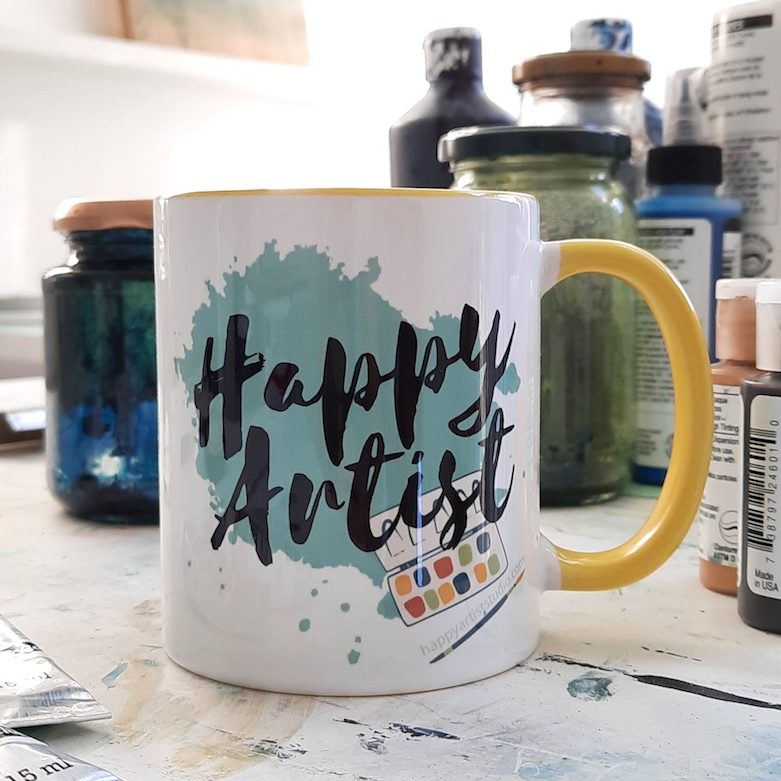
Note: This post was originally an Artnote. I’m sharing it today because while the context {the work I’m making} has shifted, the topic remains relevant, and I still use these ideas every time I’m in the studio. It also gives you a little peek into what you can expect from Artnotes. If you’d like to receive letters like this in your inbox twice a month, you can sign up below.
~~~
“Being creative is not so much the desire to do something as the listening
to that which wants to be done: the dictation of the materials.”
Anni Albers
Lately I’ve been thinking a lot about how to make more interesting art, and what that might look like in doing in our work {and of course as always, our lives in general}.
It started, as these things tend to do, in the studio.
I’d been making small paintings that I was calling ‘Moments’ {adapted from a term artist Liz Hough uses – see below for examples}, which serve a number of purposes:
- they are a ‘way in’ to painting that is quick and lighthearted, like a warm up
- they’re a way to explore ideas and try out different combinations
- they’re fun and quick when I don’t have time for a big painting sesh {well they were initially; now they’re starting to become mini finished paintings in themselves!}
One unexpected outcome is that they have been encouraging me to make more interesting art by going beyond the obvious.
What does that mean exactly?
Well, I don’t know about you, but I find it quite easy, especially when exploring a particular subject or approach, to fall into patterns, so that each piece, while not exactly formulaic, generates certain responses in me in terms of each ‘next move’.
So when I lay down a particular colour, I typically then reach for the same one I usually use after that; when I make ‘this’ shape, I’ll often go straight to ‘this other shape I do’. And then this piece tends to go up here, and that one over here… almost like a jigsaw puzzle!
There’s nothing wrong with that per se, and it does contribute to cohesive bodies of work, like this:

On one hand, I love it because this is what it means to build your unique artist’s vocabulary and construct sentences with it to create your own language.
On the other hand, I’m aware that stringing together certain actions, while comforting and easy, can also lead to a feeling of sameness that loses its edge.
I want to explore my ideas without stagnating. I want to make thought provoking, interesting art; art that makes you look again, and look closer.
And I have a horror of repetition, so each new piece needs to feel fresh and interesting even as I use a similar palette and motifs.
I do not set the bar low. 😉
So each time I find myself about to do something I’d ‘normally’ do, I’ve been stopping and thinking;
What can I do now that’s not obvious?
And then I consciously try different shapes, or I don’t put that collage piece where it ‘makes sense’ to put it.
I actively try to do something weird or apparently ridiculous, or uncontrolled, because that’s where the surprises, happy accidents, growth, and – I’m finding – more interesting art live.
These paintings balance somewhat precariously between readable landscape and something more abstract and ambiguous.
There are certain motifs that keep popping up {like those three arches from St Ives!}, and I like that because they offer a consistency that leads to recognisability. {It’s a word.}
I love exploring how to create a feeling of open space and freedom using these motifs without it being, well this is a bay, and this is a headland, and this is a boat, and that’s all neat and tidy and now what’s for lunch.
The precariousness comes from balancing the all too easy habit of falling into the obvious, and the desire to stay fresh and keep the paintings lively.
It’s a challenge of the kind my creative mind loves. My creative mind – like yours, no doubt – is like an insatiable excitement-hunting monster {bless it}, and it loves to think in new ways and make new connections between things.
Going beyond the obvious feeds and satisfies the monster, which in turn generates more paintings of greater depth and interest, and a deeper sense of satisfaction and fulfillment for me.
What are your obvious moves in art {and in life}?
Do you have ‘go to moves’ that could be replaced by unusual, quirky, even downright weird alternatives?
Sometimes my experiments just look and feel wrong – and sometimes the obvious is actually the best next move – but sometimes they break the spell of habit and generate new images and new connections.
May you step boldly away from the obvious in your art – and life! – this week. And may you enjoy exploring the unexpected, and perhaps even make new discoveries.
Tara
🙂
To receive emails like this in your inbox twice a month, fill in the boxes below to try out Artnotes. Easy unsubscribe at any time.






